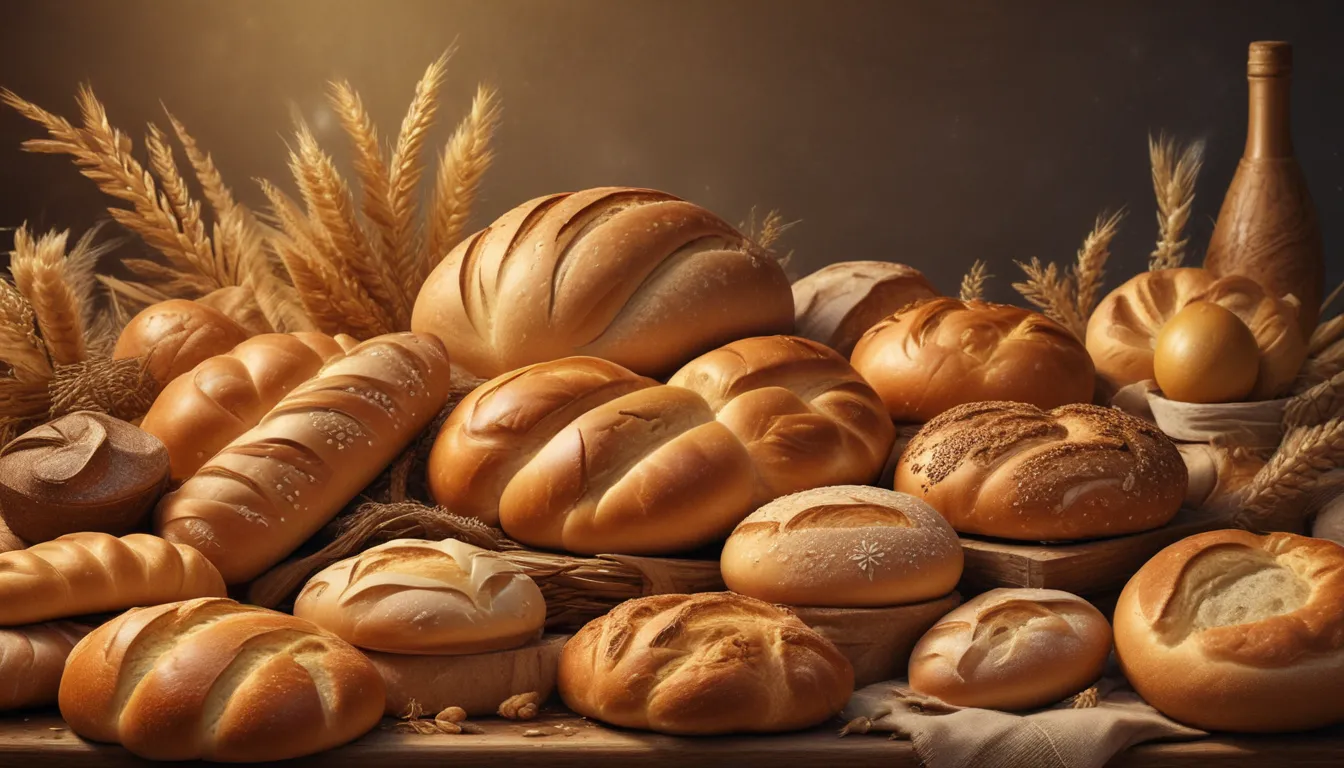The pictures in our articles might not always show exactly what the text is talking about. We use these images to make the article more interesting and eye-catching. They are there to add to the text, but not to replace it or show every detail.
Bread holds a special place in our hearts and on our plates, cherished for its comforting aroma and versatile nature. In this article, we will unravel the rich history and intriguing facts surrounding this beloved staple food. From its ancient origins to its cultural significance, bread has a story to tell that goes beyond mere sustenance. Let's embark on a journey to discover the fascinating world of bread and the role it plays in our lives.
Unveiling the History of Bread
Bread has been a dietary cornerstone for humanity for millennia, with its roots dating back thousands of years. The ancient civilizations, such as the Egyptians, are believed to be the pioneers of bread-making around 3000 BC. Since then, bread has evolved into a diverse array of varieties, each with its unique flavors and textures.
The Bread Spectrum: Countless Varieties to Explore
From the classic baguette to the tangy sourdough and the fluffy challah, bread comes in an endless array of shapes and tastes. Whether made from wheat, rye, or whole grain flour, each type of bread adds its distinct character to dishes like sandwiches, pizza, or as a side to a hearty meal.
Nutritional Benefits of Bread: More Than Just Carbs
While bread is often associated with carbohydrates, it also packs essential nutrients like fiber, iron, and B vitamins. Whether you opt for a whole grain loaf or a gluten-free alternative, bread can be a wholesome addition to a balanced diet.
The Art of Bread-Making: A Blend of Science and Creativity
The process of making bread involves a delicate balance of ingredients and techniques. Yeast, a crucial leavening agent, helps the dough rise and gives bread its airy texture through fermentation. Sourdough bread, a tangy favorite, is leavened using a wild yeast starter culture that imbues it with a distinct flavor.
Bread as a Symbol of Unity and Tradition
Beyond its nutritional value, bread holds symbolic significance in various cultures and traditions. Sharing a meal and breaking bread together symbolize unity, friendship, and hospitality, making it a centerpiece of social rituals for centuries.
Exploring Bread Around the World: A Culinary Tour
The role of bread in different cultures varies, from being a daily staple to a ceremonial dish. In France, the iconic baguette is protected by strict regulations to preserve its traditional preparation, while gluten-free alternatives cater to individuals with specific dietary needs.
Bread: More Than Just Food
Bread transcends its role as a mere food item and becomes a vessel for cultural traditions, artistic expression, and sensory experiences. The process of bread-making itself can be therapeutic, offering a calming and meditative activity for many enthusiasts.
Conclusion: Embracing the Timeless Tradition of Bread
In conclusion, bread's enduring appeal lies in its versatility, nutrition, and cultural significance. From the humble sandwich to the intricate art of bread-making, this staple food continues to enrich our lives and connect us across diverse culinary landscapes. So, the next time you savor a slice of warm bread, remember the fascinating facts that make it more than just a meal accompaniment.
FAQs: Bread, Explained
- What is the history of bread? Bread traces its origins back to ancient civilizations like the Egyptians around 3000 BC.
- Is bread a healthy food? It can be part of a healthy diet, especially whole grain varieties rich in fiber and nutrients.
- How many types of bread are there? Countless varieties exist worldwide, each offering unique flavors and textures.
- Can bread be gluten-free? Yes, gluten-free alternatives are available for those with gluten intolerance.
- What are common uses for bread? Bread is used in sandwiches, toast, breadcrumbs, and various savory dishes.
- Can bread be frozen? Yes, freezing bread can extend its shelf life, ensuring freshness when needed.
- How long does bread last? Store-bought bread typically lasts 5-7 days at room temperature, varying by type.
- What is yeast's role in bread-making? Yeast aids in dough rising, imparting a light and fluffy texture to bread.
- Are there cultural rituals related to bread? Yes, bread plays a significant role in religious traditions and communal gatherings.
- Are there bread-related festivals? Indeed, festivals worldwide celebrate the art of bread-making and its cultural significance.
As we delve into the world of bread, let's savor each slice, not just for its taste but for the stories and traditions it carries within. Join us on this journey of discovery and appreciation for one of the most beloved foods in history.






